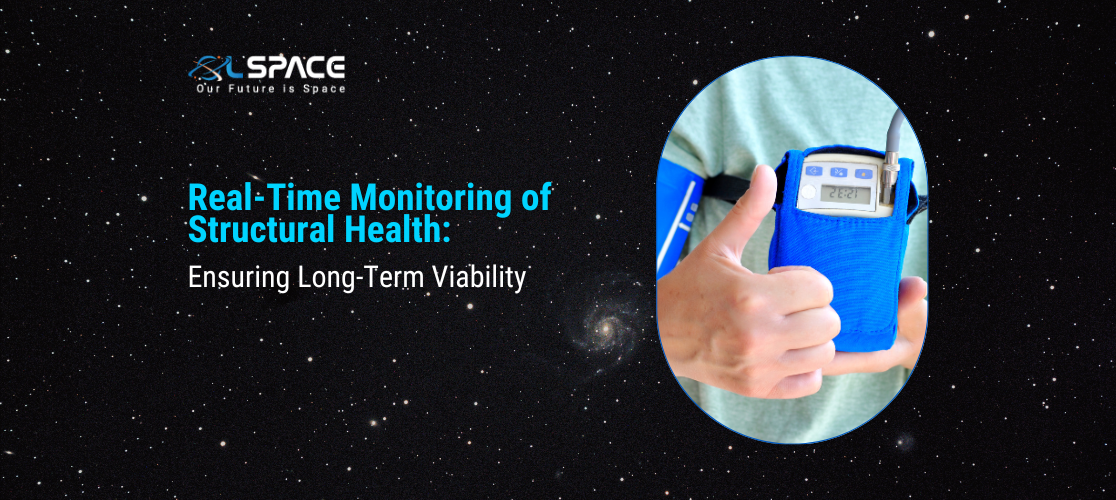09 January 2024
Real-Time Monitoring of Structural Health: Ensuring Long-Term Viability

The real-time monitoring of structural health has become a critical aspect of maintaining the longevity and safety of infrastructure. From bridges and buildings to dams and industrial facilities, continuous monitoring allows for the timely detection of potential issues, enabling proactive maintenance and minimising the risk of catastrophic failures. This article explores the significance of real-time structural health monitoring and its role in ensuring the long-term viability of diverse structures.
1. Early Detection of Anomalies:
Continuous Surveillance: Real-time monitoring systems provide constant surveillance, enabling the early detection of structural anomalies or deviations from expected behavior.
Sensor Networks: Deployed sensor networks collect data on factors such as vibrations, deformations, and environmental conditions, offering a comprehensive view of structural health.
2. Preventive Maintenance and Cost Savings:
Proactive Intervention: Timely identification of structural issues allows for proactive maintenance and intervention, preventing minor problems from escalating into major, costly repairs.
Optimised Maintenance Scheduling: Real-time data enables the optimisation of maintenance schedules, ensuring that resources are allocated efficiently based on the actual condition of the structure.
3. Enhanced Safety and Risk Mitigation:
Risk Assessment: Continuous monitoring supports ongoing risk assessments by identifying potential weaknesses or vulnerabilities in a structure.
Early Warning Systems: Real-time monitoring systems can serve as early warning systems, providing alerts in the event of abnormal conditions or potential hazards.
4. Environmental Impact Assessment:
Response to Environmental Factors: Structural health monitoring includes tracking the impact of environmental factors such as temperature, humidity, and seismic activity on the structure.
Climate Resilience Planning: Insights from real-time monitoring contribute to climate resilience planning, ensuring that structures can withstand changing environmental conditions.
5. Geotechnical Stability Monitoring:
Slope Stability: For structures situated on slopes, real-time monitoring assesses slope stability, detecting any shifts or deformations that may affect structural integrity.
Subsurface Conditions: Monitoring subsurface conditions provides valuable information on soil movements and potential ground settlement.
6. Structural Integrity in Industrial Facilities:
Equipment-Induced Vibrations: Real-time monitoring in industrial settings tracks vibrations induced by machinery, ensuring that these vibrations do not compromise the structural integrity of buildings or supporting structures.
Load Monitoring: Monitoring load distribution on industrial structures prevents overloading and supports optimal use of the facility.
7. Bridge Health Monitoring:
Dynamic Response Analysis: Real-time monitoring of bridges includes dynamic response analysis to assess the effects of traffic loads and environmental conditions.
Bridge Deformation Monitoring: Continuous monitoring detects any abnormal deformations, cracks, or settlements, allowing for timely maintenance and ensuring public safety.
8. Data-Driven Decision-Making:
Big Data Analytics: Real-time monitoring generates vast amounts of data, which can be analysed using big data analytics to extract meaningful insights.
Predictive Analytics: Predictive analytics based on real-time data facilitates data-driven decision-making, helping stakeholders make informed choices regarding maintenance and structural improvements.
9. Wireless Sensor Networks and IoT Integration:
Wireless Connectivity: Wireless sensor networks enable remote monitoring, allowing for real-time data collection from challenging or remote locations.
Internet of Things (IoT): Integration with IoT technologies enhances the connectivity and scalability of real-time monitoring systems.
10. Long-Term Structural Health Records:
Historical Data Repository: Real-time monitoring systems maintain historical records of structural health, providing a valuable resource for long-term analysis and planning.
Performance Trend Analysis: Analysing performance trends over time helps in understanding the aging process of structures and planning for their continued maintenance and improvement.
Conclusion: Prolonging Structural Lifespan through Vigilant Monitoring
Real-time monitoring of structural health is an indispensable tool for ensuring the long-term viability of infrastructure. By embracing technological advancements and leveraging continuous monitoring systems, organisations can proactively address structural issues, enhance safety, and optimise maintenance efforts. The data-driven insights gained from real-time monitoring not only support immediate decision-making but also contribute to the development of strategies that prolong the lifespan of structures, making them resilient and adaptable to the challenges of the future.
